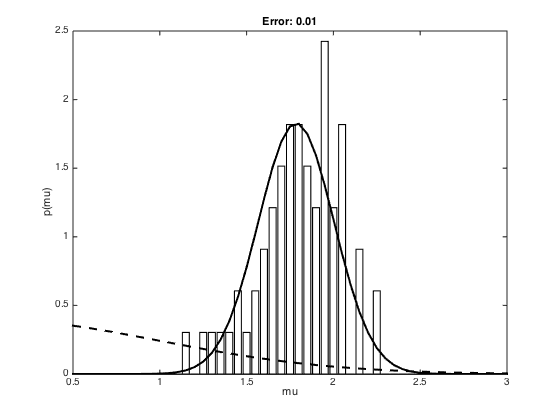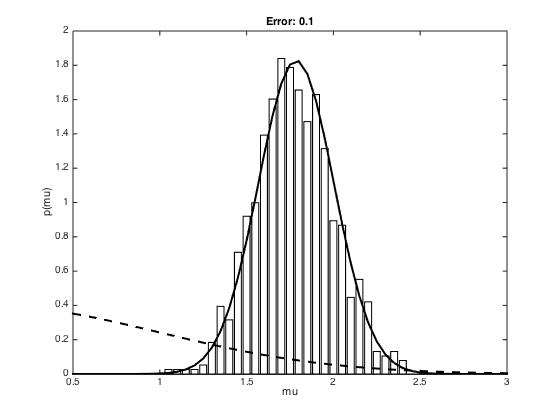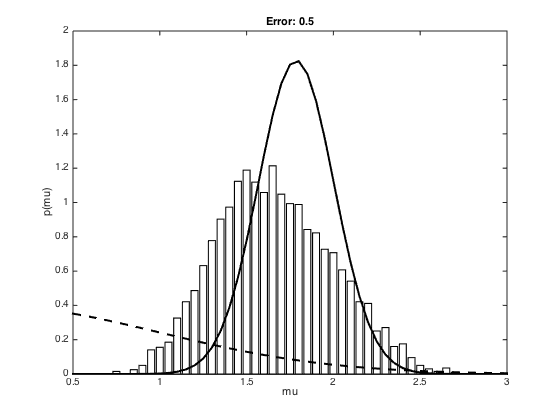abc.m
Approximate Bayesian Computation
From A First Course in Machine Learning Simon Rogers, August 2016 [simon.rogers@glasgow.ac.uk]
Contents
Start with an exact posterior from the coin game
Assume we have observed 3 heads in 10 tosses
clear all;close all p = 0.3; % true value N = 10; n_success = 3; % Define the prior alpha = 1;beta = 1; accepted = []; S = 20000; % Do the sampling for s = 1:S proposed_p = betarnd(alpha,beta); proposed_success = sum(rand(1,N)<proposed_p); if proposed_success == n_success accepted(end+1) = proposed_p; end end % Compute some statistics and plot the true distribution with the samples % (and the prior - dashed) efficiency = length(accepted)/S; b = [0:0.02:1]; [a,b] = hist(accepted,b); b_diff = b(2)-b(1); a = a./sum(a); a = a./b_diff; figure(1); hold off bar(b,a,'facecolor',[1 1 1]); hold on plot(b,betapdf(b,alpha+n_success,beta+N-n_success),'k','linewidth',2) plot(b,betapdf(b,alpha,beta),'k--','linewidth',2) xlim([0 1]) xlabel('r') ylabel('p(r)')
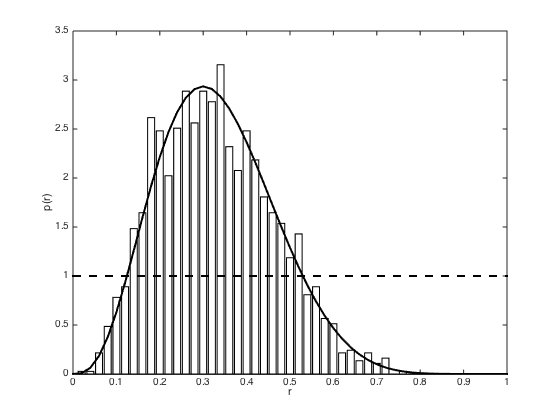
Now make it a bit 'approximate'
Samples are acceptec if they have an error of less than or equal to 1 or 2 (i.e. 2,3,4 successes will all be accepted or 1,2,3,4,5)
clear all;close all p = 0.3; % true value N = 10; n_success = 3; for error = 1:2 % Define prior as before alpha = 1;beta = 1; accepted = []; S = 20000; for s = 1:S proposed_p = betarnd(alpha,beta); proposed_success = sum(rand(1,N)<proposed_p); if abs(proposed_success - n_success)<=error accepted(end+1) = proposed_p; end end % Compute some stats efficiency = length(accepted)/S b = [0:0.02:1]; [a,b] = hist(accepted,b); b_diff = b(2)-b(1); a = a./sum(a); a = a./b_diff; figure(); hold off bar(b,a,'facecolor',[1 1 1]); hold on plot(b,betapdf(b,alpha+n_success,beta+N-n_success),'k','linewidth',2) plot(b,betapdf(b,alpha,beta),'k--','linewidth',2) xlim([0 1]) xlabel('r') ylabel('p(r)') end
efficiency =
0.2715
efficiency =
0.4573
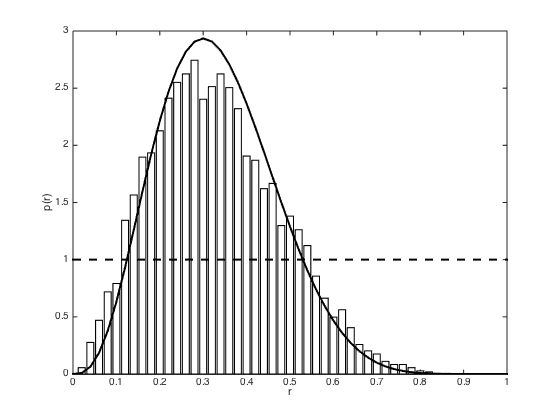
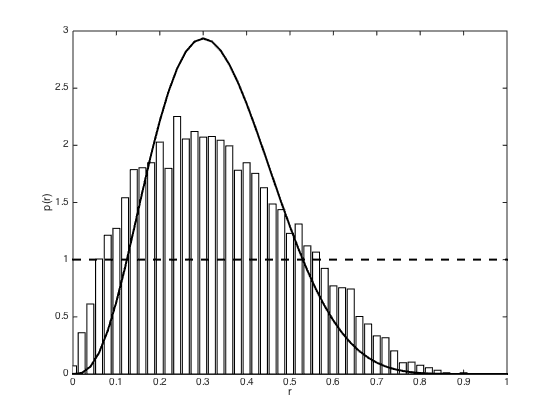
Now use ABC for a Gaussian
Define the Gaussian parameters
true_mu = 2; ss = 1; % Draw N samples N = 20; x = randn(N,1).*sqrt(ss)+true_mu; mu = mean(x); max_errors = [1e-2,1e-1,5e-1]; efficiency = {}; for me = 1:length(max_errors) max_error = max_errors(me); mu0 = 0; ss0 = 1; S = 50000; accepted = []; for s = 1:S % Sample a mu from the prior proposed_mu = randn.*sqrt(ss0)+mu0; % Sample some data proposed_x = randn(N,1)+proposed_mu; % Ciompute the data mean and compare to the sample mean d_mu = mean(proposed_x); if abs(d_mu-mu) < max_error accepted(end+1) = proposed_mu; end end % Compute some stats and plot efficiency{me} = 100*length(accepted)/S; m = [0.5:0.05:3]; post_ss = 1/(1/ss0 + N/ss); post_mu = post_ss*(mu0/ss0 + (1/ss)*sum(x)); [a,b] = hist(accepted,m); a = a./sum(a); a = a./(b(2)-b(1)); figure(); bar(b,a,'facecolor',[1 1 1]) hold on plot(m,normpdf(m,post_mu,sqrt(post_ss)),'k','linewidth',2) plot(m,normpdf(m,0,1),'k--','linewidth',2) xlim([0.5 3]) xlabel('mu') ylabel('p(mu)') title(sprintf('Error: %g',max_error)); end
